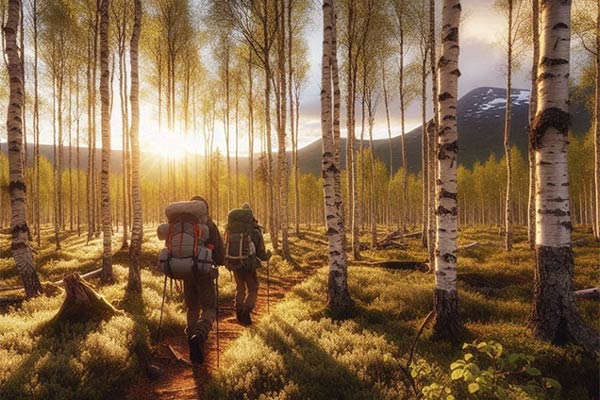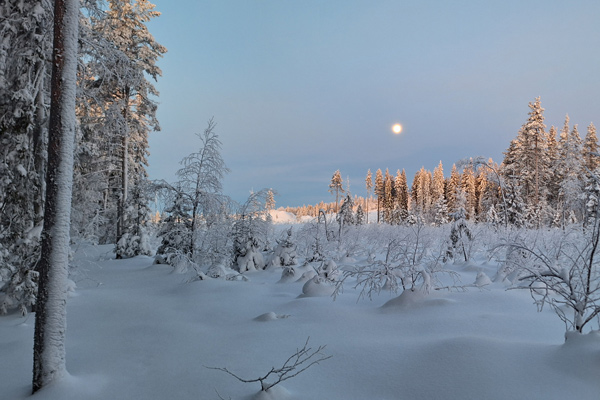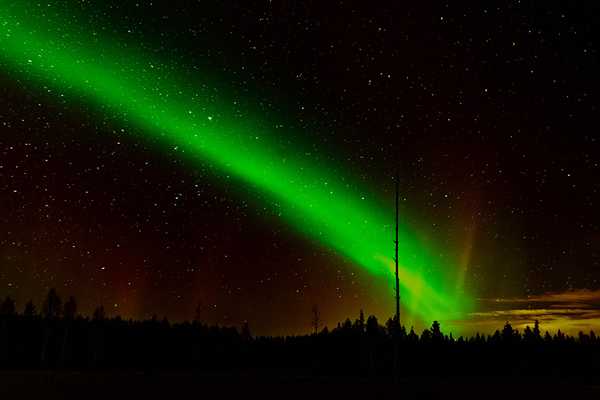Fishing in the Burträsk Region
A comprehensive guide to waters, techniques, and lures
An Angler's Paradise
With its countless lakes and rivers, the Burträsk region is a true paradise for anglers. The diversity of the waters, from large, nutrient-rich lakes to small, clear forest rivers, offers the perfect spot for every taste and fishing technique. Whether you are after trophy pike, cautious zander, or feisty trout – this is where anglers' dreams come true.
Pro Tip: Bettys Hus as Your Base
Bettys Hus is the perfect, central starting point for your fishing trips. Many of the top waters are just a short drive away. After a long day on the water, you can relax by the fireplace and reminisce about your experiences.
Important Information for Anglers
Why is the region so good for fishing?
The combination of a vast number of waters, low fishing pressure, and pristine nature creates ideal conditions for healthy and large fish populations. Sweden's Right of Public Access also allows for easy access to many shorelines.
What main fish species can I expect?
The main target species are pike, perch, and zander in the lakes, as well as brown trout and grayling in the rivers. The Vindelälven river also offers the chance to catch salmon and sea trout.
Do I need a fishing permit (Fiskekort)?
Yes, a valid fishing permit is mandatory for almost all waters in Sweden. Fishing without a license is illegal and subject to fines.
Where can I buy a fishing permit?
The easiest method is to buy it online through portals like iFiske.se. Permits are also often available at local points of sale such as petrol stations, supermarkets, or tourist information offices.
What rules do I need to follow?
Each body of water (or Fiskevårdsområde - FVO) has its own rules regarding minimum sizes, closed seasons, catch limits, and permitted methods. Read these rules on your fishing permit carefully!
When is the best fishing season?
Spring (May/June) and autumn (September/October) are often the best times for predatory fish. Midsummer (July/August) is ideal for fishing in the evening and at night. Winter offers fantastic ice fishing.
Top Fishing Waters in the Immediate Vicinity
The Burträsk region is a mosaic of countless lakes and rivers. Here is a selection of the best waters, all quickly accessible from Bettys Hus, each offering a unique character and great fishing opportunities. You can find all the places mentioned here on our interactive map.
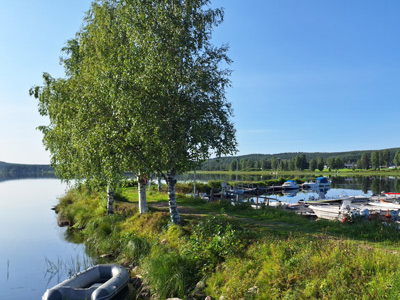
Burträsket
The large, nutrient-rich lake with an excellent population of zander, pike, and perch.
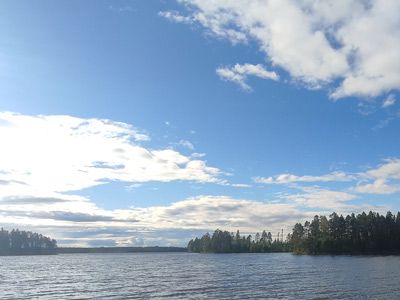
Bygdeträsket
One of Västerbotten's largest lakes and a widely known spot for trophy pike.
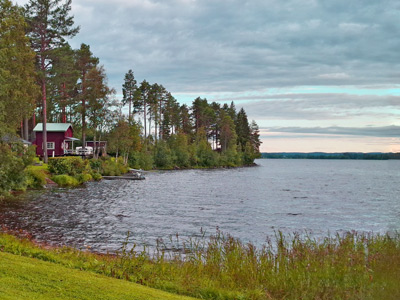
Göksjön
A quiet, secluded forest and marsh lake, ideal for undisturbed fishing for pike and perch.
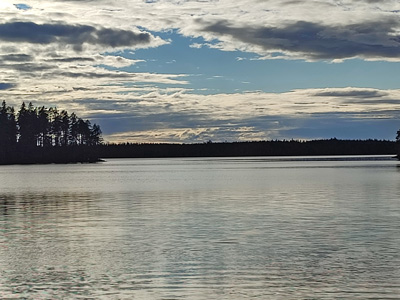
Tallträsket
The idyllic "home lake" of Bettys Hus, perfect for a quick trip for pike, perch, and trout.
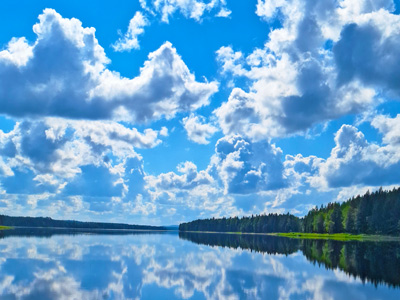
Vindelälven
A national river and a dream for every salmon, sea trout, and grayling angler.
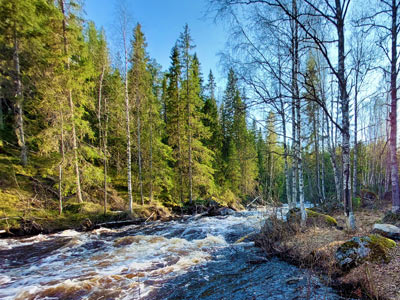
Sikån
A classic taiga forest river with wild brown trout and grayling.
Fishing Techniques for Swedish Waters
The diversity of the waters requires an equally diverse range of fishing techniques. Whether you are a passionate specialist or a curious all-rounder, here you will find the most successful methods for pursuing the fish.
What is spin fishing and for which fish is it suitable?
In spin fishing, an artificial lure (e.g., wobbler, soft plastic, spinner) is cast out and retrieved to imitate a fleeing baitfish. It is by far the most popular and versatile method for catching pike, perch, and zander.
Where and for what can I fly fish?
Fly fishing is ideal for rivers like the Sikån or the Vindelälven. With artificial flies (imitations of insects or small fish), you mainly catch brown trout and grayling. On the lakes, you can also successfully target pike and perch with larger streamers.
What is dropshot fishing?
This is a finesse technique from modern predator fishing. The lure is presented above a weight tied to the end of the line. This allows for a very slow and enticing presentation in one spot, which is extremely effective for cautious zander and perch on difficult days.
How do I successfully fish with natural bait (float & bottom)?
Fishing with a worm or baitfish on a float or bottom rig is extremely effective when the fish are passive. With a float, you see the bite directly, while a bottom rig presents the bait at depth – ideal for burbot or zander at night.
When is bottom fishing useful?
Fishing with bait on the bottom of the water (ledgering) is particularly successful at night. It is the top method for catching burbot in winter and can also be used for eels or large bream.
What special techniques are there for salmon?
On the Vindelälven, two methods are dominant: Trolling from a boat, where large, flanking wobblers are slowly pulled through the deep channels, and fishing with a heavy two-handed fly rod in the large rapids, where the fly is presented across the current ("swing").
The Right Lure Choice: Key to Success
An angler's tackle box is often a real treasure chest. But which lure is the right one? The choice of the appropriate size, color, and weight is often more crucial than the fishing spot itself.
What is the right lure size?
As a rule of thumb: large lures (15-30 cm) for pike, medium lures (8-15 cm) for zander, and small lures (3-8 cm) for perch and trout. But there are exceptions: sometimes huge pike are caught on small perch lures and vice versa. Experimentation is everything!
Which colors work in clear lakes like Tallträsket?
In clear water, natural colors are unbeatable. Patterns that imitate real fish (perch decor, roach decor, silver, brown) are the most convincing, as the predators can inspect the lure closely.
Which colors work in murky lakes like Göksjön?
In murky, humus-rich water, contrast and visibility are crucial. Bright shock colors like neon yellow (firetiger), chartreuse, pink, or pure white create a strong silhouette and entice the fish to bite.
How do I choose the right lure weight (e.g., for jigging)?
The weight of the jig head should be chosen so that you can feel the bottom well, but the lure flutters as long and seductively as possible during the sinking phase. The rule is: as light as possible, as heavy as necessary to maintain contact despite wind and current.
Soft plastic, wobbler, or spinner – what is best when?
Soft plastics: Extremely versatile, perfect for fishing near the bottom (zander, perch). Wobblers: Ideal for covering large areas of water (trolling for pike, salmon). Spoons/Spinners: Classics that score with strong pressure waves and light reflections, great for perch and trout.
When is natural bait better than artificial lures?
When fish are passive and not actively hunting, natural bait (worm, baitfish) is often superior. Its scent and natural appearance can persuade even the most cautious predator to bite. This is a top choice, especially in the cold of early spring or late autumn.
Discover the Inhabitants of Our Waters
From trophy pike to feisty trout – our detailed fish species guide gives you all the information you need for targeted success. Learn about habitats, the best fishing times, and the most successful lures for each species.
Discover Other Activities
The region has more to offer than just fishing. Explore our other comprehensive guides for your perfect nature experience.

